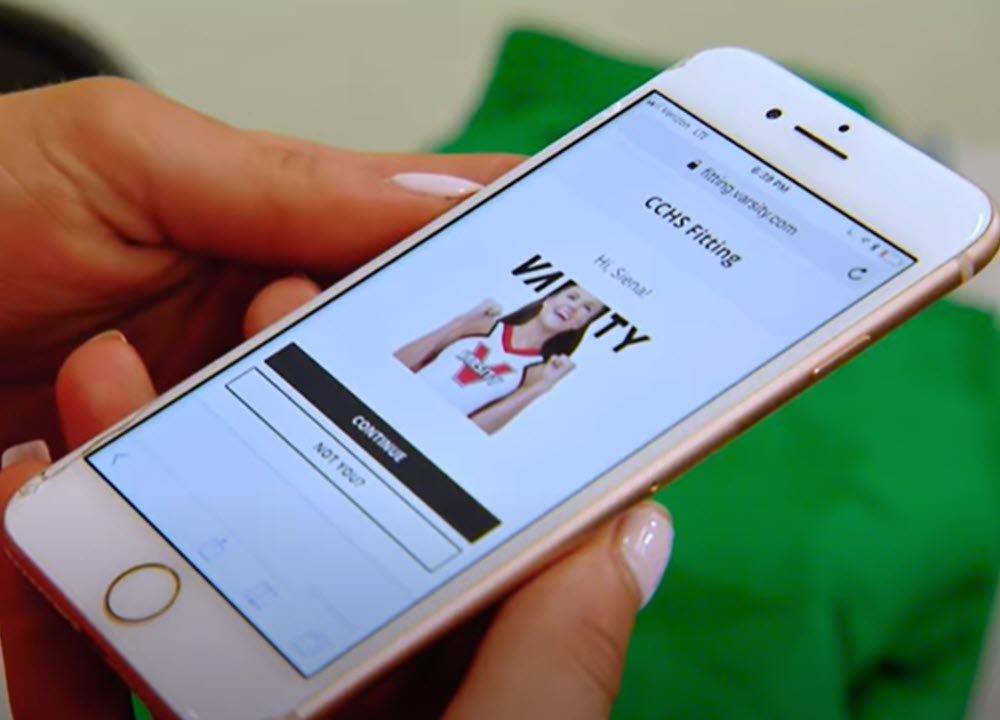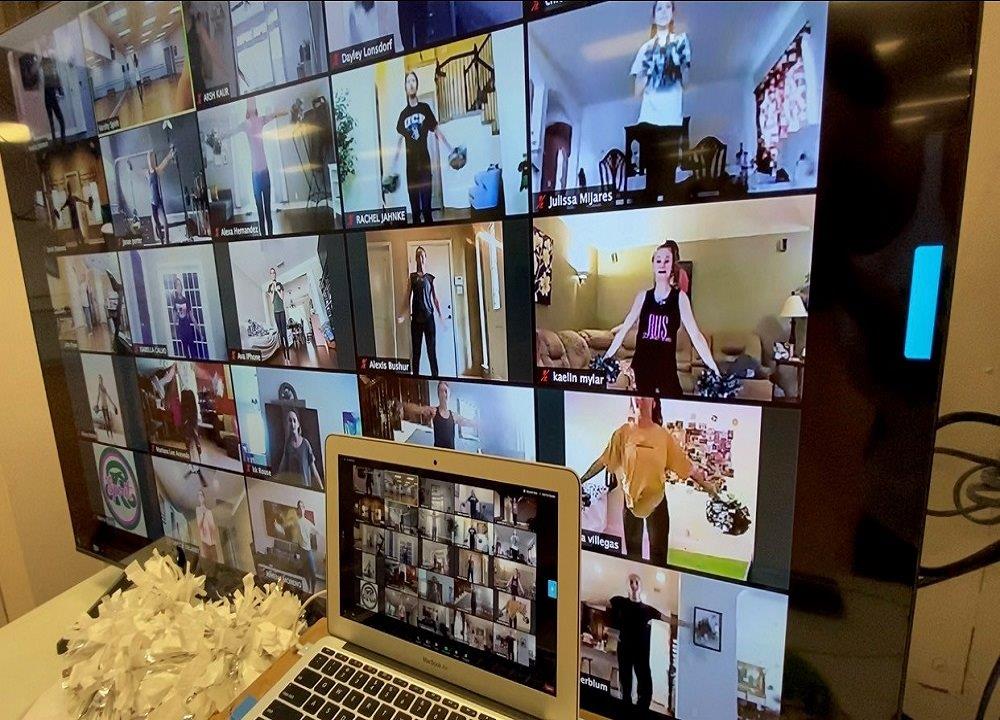
Business leaders across sectors are transforming the way they work to integrate into the “new normal” posed by the novel coronavirus. The pandemic poses even greater challenges to brands historically reliant on in-person interactions. A company doing a great job changing their strategy to pivot business during COVID-19 is Varsity Brands. “When you’re in the business of serving 55 million kids in school and they don’t go, life changes,” Adam Blumenfeld, CEO of Varsity Brands, tells We First.
The B to B to C company provides branding, white label apparel and accessories that support athletes, cheerleaders and graduates via three subsidiaries: BSN Sports, Varsity Spirit and Herff Jones.
In 2019, Varsity Brands had their best year in history. When COVID-19 hit they were forced to implement budget cuts, furlough employees and transition their corporate offices to a remote model within just 72 hours.
While they took a big hit, the virus pushed Varsity Brands to innovate. They developed new verticals and have recuperated a significant amount of lost revenue. The apparel brand was also able to maintain 2,000 sales reps and is more prepared to face future uncertainty. Varsity Brands’ resiliency journey presents actionable lessons for brands looking to pivot business during COVID-19.
12 Lessons on resilience in the face of uncertainty from Varsity Brands
1) Support your customers:
Businesses aren’t the only ones feeling the chaos and obstacles presented by COVID-19. “The experience for the customer can’t be sacrificed,” Blumenfeld says. “Coaches, cheer advisers, principals and superintendents need us in a consultative role today, more than ever.”
To support customers, Varsity Brands invested in its own team members to ensure they had the resources needed to serve clients. That meant training its 2,000 sellers how to go virtual. While there was a learning curve, “Our sales people have already said they can make eight to ten meaningful contacts a day by Zoom compared to four in person,” Blumenfeld says.
Not only is Varsity Brands building the infrastructure to be there for customers in difficult times, they are also increasing efficiency.
2) Take a flexible approach:
Part of supporting customers is finding ways to meet their expectations regardless of new obstacles that come with the pandemic. Manufacturers around the world were delayed because of COVID-19. “Customers forget that,” Blumenfeld says. “They were getting ready for football in July and saying, ‘Where’s my stuff? I placed an order in January.’”
With factories backed up as much as 6 months, it can be difficult to meet pre-designated deadlines.
“One thing my team learned through this is that you’ve got to be a solutions provider and have an answer to a problem. Even if the answer is, ‘I’m going to give you an inferior product or a different looking thing to get you through the next eight weeks until the Nike product or the Under Armour product you ordered shows up,” Blumenfeld explains. “My job is to make sure our customers can coach a team, or play a game.”
The takeaway here is that in times of crisis, it’s critical to utilize the most readily available resources and deliver. This may mean changing your product or service offerings or developing new ways to solve problems.
3) Leverage partnerships:
Partnerships are essential to delivering high quality services and adapting to unforeseen obstacles. To provide high school seniors with a memorable graduation experience during the pandemic, Herff Jones partnered MarchingOrder and StageClip.
“We helped build out their software a bit more quickly so we could host virtual graduations,” Adam explains. “It gives parents and students a two minute keepsake video that interlaces speeches from the valedictorian and the principal and holds space for the kid to be recognized.” Herff Jones did a thousand of those types of events across the country.
Essentially, collaboration scales growth and innovation in ways that aren’t possible when acting alone.
4) Adopt technology:
The upsurge of remote work and virtual events has brought an onslaught of technology adoption and innovation. “The cheerleading salesperson used to take measurements of the squad in person. Within eight weeks, we were able to pivot to virtual fittings,” Blumenfeld says. “You can put in all of your stats and we produce your uniform on time for September with no physical contact. That’s something that will be used even after this virus clears up.”

Varsity Brands also implemented programs like BSN Sports’ Coaching Clinic Webinars, virtual training camps for cheerleaders, a virtual tryout platform and branded ecards to better connect with their players and students.
The lesson here is that COVID-19 has necessitated the adoption of new digital tools. While there may be some upfront costs and time required to deploy these technologies, if done right, they add to your toolkit and make your business stronger in the long run.
5) Stay lean:
Increased uncertainty and reduced sales send strong warnings to business owners. “At the onset of COVID-19 we estimated revenue could be cut by 40% to 60%,” Varsity Brands’ CEO says. “We took $130 to $140 million out of our operating cost within two weeks. That included salaries getting cut in half for executives. Some executives, including myself, took no money for the better part of six months. The company as a whole took a 20% haircut. We had hundreds of furloughs.” Varsity Brands also saved money by cutting out sales reps’ travel and accommodations and reassessed their overall budget. “It was a crash course on being frugal and treating every penny like it’s your last.”
Ultimately, by cutting the fat and focusing on what matters, you can make your business tighter, more efficient and more profitable. Like technology, lean business practices can give you a competitive edge whether you’re running a small organization or an international conglomerate during the pandemic or beyond.
6) Lead With We:
Brands that marry purpose with profit scale growth and impact. In fact, when quality and price are equal, nearly 90 percent of consumers would rather purchase from a purposeful brand than a company doing business as usual.
“There is somebody online somewhere that can give you every single thing I sell,” Adam says. “When you’re a transactional brand, people use you until they don’t need you. Then they leave you for a penny. When you’re a purposeful brand, people are buying from you and relating to you for different reasons. They’re invested in the same ideals you are.”
One of the reasons Varsity Brands is able to beat the competition is because they stay true to their purpose and mission “to elevate experiences for 55 million kids on their campus and in their community.” The company is taking actions in support of their values with programs like the Believe In You video series and rebranding roughly 400 schools with Confederate names.
“The ROI behind impact shows up in customer retention,” Blumenfeld says. “It shows up in our super high employee retention rates, even though we’re not in a typically high paying industry. There’s a karma that comes with it.”
The takeaway here is that defining, acting on and sharing your purpose is key to attracting and retaining talent as well as building consumer goodwill.
7) Own your mission:
Many B2B companies don’t see the value in building brand recognition. Why not simply invest in consumer-facing subsidiaries and let the house of brands be a silent actor? “We want Varsity Brands to stand for something,” Blumenfeld says.
Over the next 5 years, Herff Jones, Varsity Spirit and BSN Sport will indicate that they are in the Varsity Brands family. “If we’re going to be serious about elevating the student experience and increasing pride and engagement on campus, we have to educate people about our values.”
By sharing their mission with the world and leveraging different verticals to achieve a common goal, Varsity Brands is cultivating brand recognition, trust and relationships with other businesses as well as consumers.
8) Address areas that need improvement:
While it’s important to celebrate social good, it is equally critical to take responsibility for areas of your business that could use some work. Several months ago, Varsity Brands came out in support of the Black Lives Matter movement.
“You’ve got to look in the mirror if you’re going to talk to anybody else about it,” Blumenfeld says. “The bottom line is that we’ve had a bunch of white guys in a lot of management positions that have been around, like I have, for 30 years. To change that in mass, we’ve got to start interviewing and assessing talent differently. It starts with what my candidate slate looks like.”
It can be uncomfortable to address issues like unconscious bias in the workplace. When you do make public statements and take action behind them it makes your brand look more human. It also fosters a sense of authenticity and shows that you’re serious about being the change you want to see in the world.
9) Join cultural conversations:
Brands that position themselves as teammates in the fight to take on challenges affecting society hit the ball out of the park. Varsity Brands is taking on the issue of academic performance with its IMPACT program.

“We found that campuses with a higher degree of pride and spirit showcase higher ACT and SAT scores, graduation rates and lack of truancy.” To help schools build spirit, Varsity Brands offers complete rebranding of the school including mascot and logo design, print materials and decorations as well as custom merch.
“There’s 25,000 schools in America. 2000 of them are impact certified schools. Principals and administrators have latched onto the idea that students perform better when they’re proud of their school.”
The learning is that when you position your brand as a solution to a social problem you change the conversation from transactional to values based.
10) Take advantage of the situation:
Challenging times also create windows of opportunity. If you can find a way to carve out a competitive advantage during rough spells, you can gain market share in the long term.
Varsity Brands is financed by Bain Capital. One of the benefits of working with a company like Bain is that they bring a global perspective, Adam says. Bain watched the virus play out in other parts of the world before it hit the U.S. Bain and Varsity Brands have been able to strategize about the way forward and position the business for growth.
“Many competitors won’t be able to keep all their sellers in the market,” Blumenfeld says. “ If we can provide a service that is unforgettable and delight these clients, they’ll never forget it. We can be harder to live without if we do our jobs right during COVID-19.”
By doubling down on customer service during a time when your competitors may not be able to do the same, you can expand your business and deepen customer relationships.
11) Invite stakeholders to build a better world:
Brands that connect consumers and employees with causes they care about forge relationships around things that matter.
“Over the last nine years, we’ve raised about a million dollars a year for Saint Jude,” Blumenfeld says. “This year, we raised $2 million. I think people are saying, ‘If this is painful for me, how painful must it be for somebody who’s kids going through pediatric cancer?’.”
Even when people are struggling, they want opportunities to participate in something bigger than themselves. Help them do that and they will help you grow your business.
12) Be realistic:
While we all need hope to get through these difficult times, it’s important to be pragmatic. “Unfettered optimism can be dangerous,” Blumenfeld says. “If you set unrealistic expectations, you do nothing but disappoint yourself and those around you. Contrarily, If you have enduring faith that things will eventually get better and that you have a role to play in making things better, you will win over the long term.”

